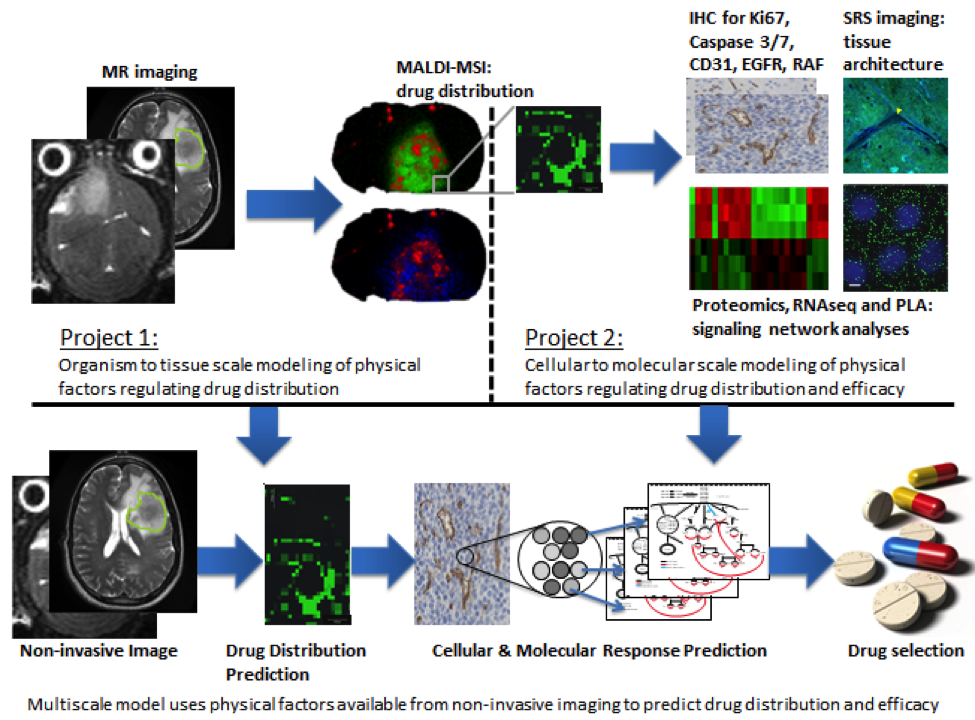The central theme guiding the scientific goals of our center is that a fusion of physical sciences, engineering and oncology will provide critical insight into the fundamental issues governing poor patient response to targeted therapeutics for brain tumors and brain metastases. The underlying premise is that high-content measurement and imaging techniques, employed across a variety of scales (molecular-cellular-tissue), and combined with data integration and computational modeling, will enable the identification of key physical and physico-chemical features regulating drug distribution and resulting efficacy and thereby facilitate development of improved therapeutic strategies. Each aspect of the center is guided by this central theme, with the projects divided predominantly by measurement and modeling length scales (Project 1 occurs at the tissue/organism scale, while Project 2 occurs at the molecular/cellular scale). The ultimate goal of the Data Handling and Integration Core is to integrate the models developed at these different scales into a multi-scale model that enables prediction at the molecular/cellular scale based on non-invasive imaging at the tissue/organism scale, and vice-versa.

Overview of model construction. Project 1 will build a model of physical factors measured by MRI that influence drug distribution and Project 2 will define a model of physical factors at a molecular/cellular scale that influence drug distribution and efficacy. These two component models will be integrated into a multi-scale model of drug delivery and efficacy that could be applied to individual patients.